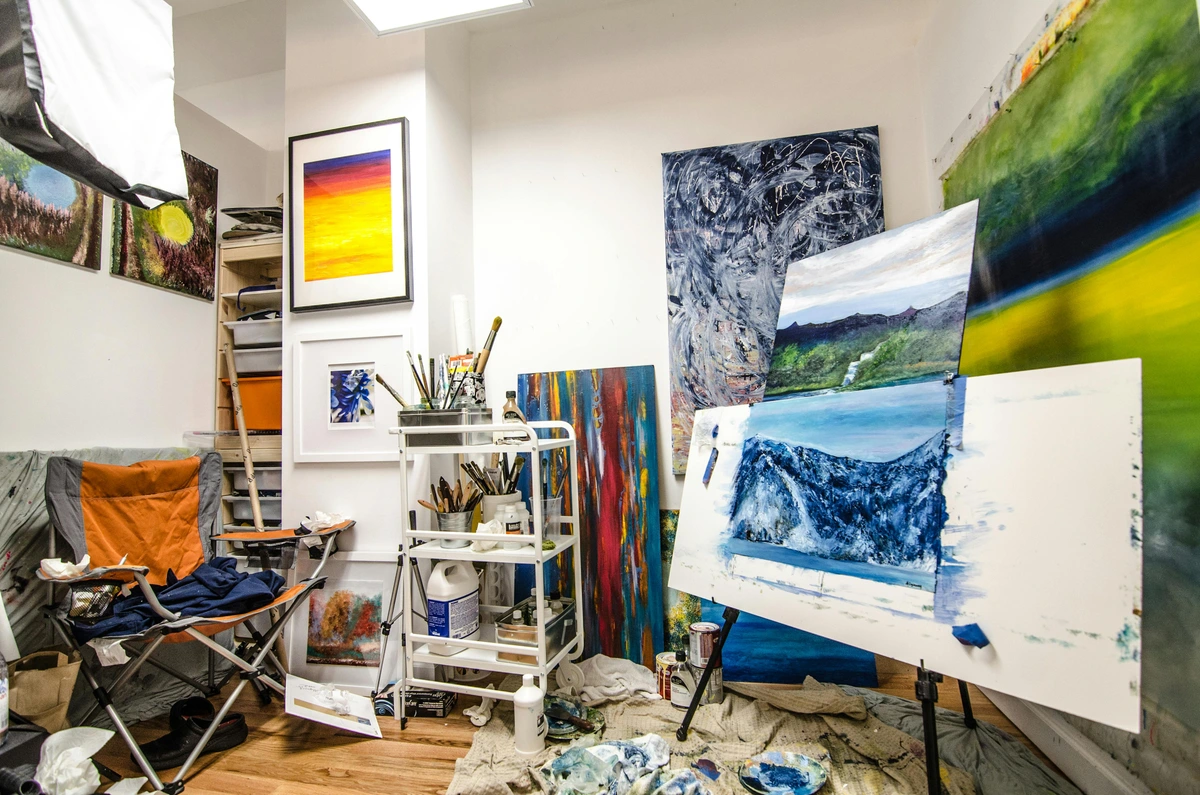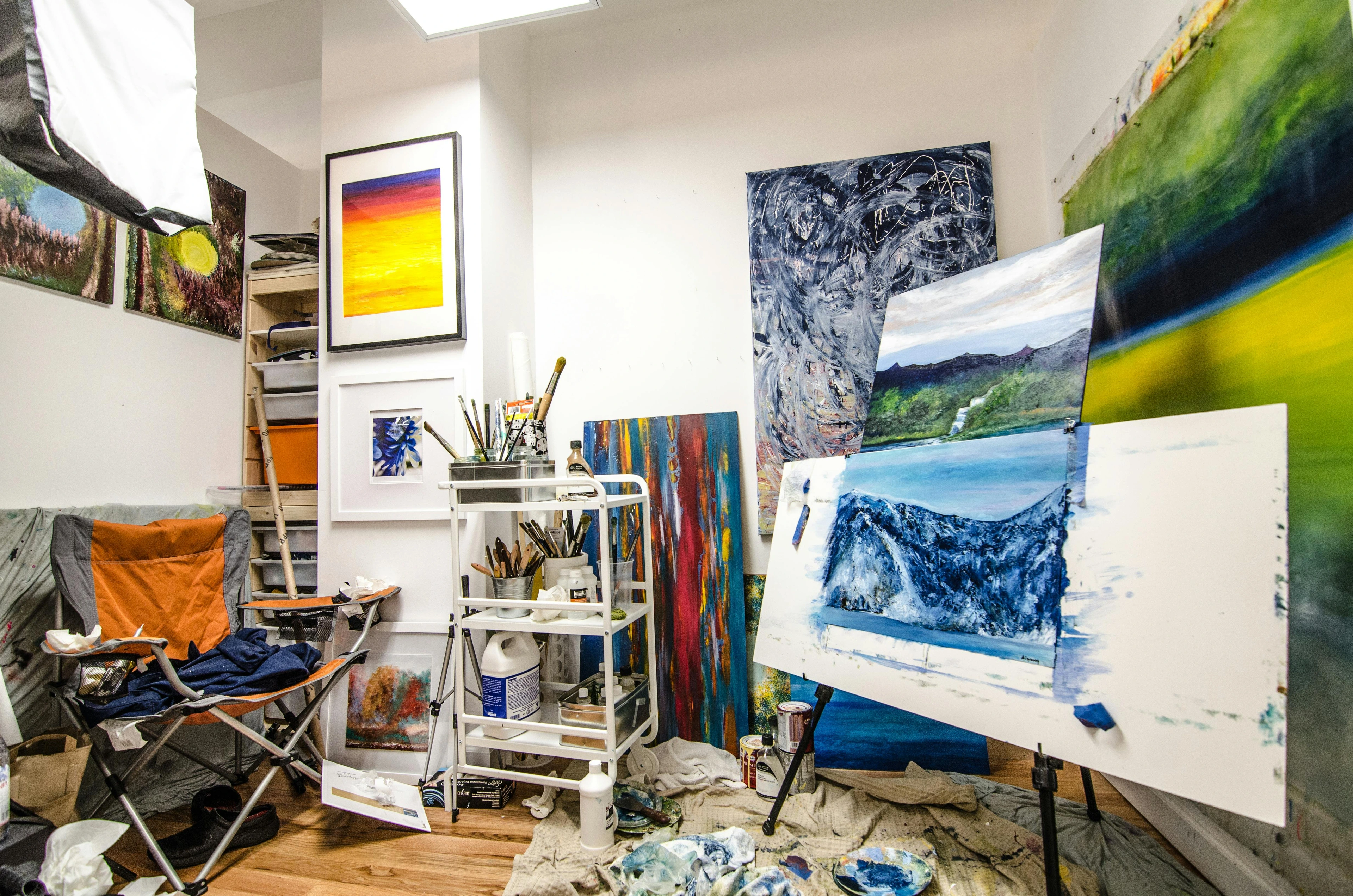
The History of Abstract Art: A Personal Journey & Expanded Guide
Join me on an expanded personal journey through the history of abstract art. Discover its surprising origins, meet the brave pioneers, explore major movements like Abstract Expressionism, understand different types, address common criticisms, and learn how to appreciate and collect this vibrant, non-representational art form. It's a conversation that speaks directly to your senses and emotions.
The History of Abstract Art: A Personal Journey & Expanded Guide
Abstract art. Ah, yes. It's that stuff that sometimes makes people scratch their heads and ask, "But... what is it?" I remember the first time I saw a truly abstract painting – a large canvas of swirling colors and bold lines. My initial thought was, honestly, "My kid could do that." But standing there, letting the sheer visual energy wash over me, something shifted. It wasn't about recognizing a picture; it was about feeling a jolt, a curiosity, a sense of pure visual excitement. With its vibrant colors, intriguing forms, and a delightful refusal to just show you a picture of a cat (unless it's a very abstract cat, of course), it's one of the most influential and, dare I say, enduring movements in art history. It challenges us – the viewers, the artists, the curious minds – to look beyond the visible world and engage with art on a purely aesthetic and emotional level. It's less about seeing and more about feeling. But seriously, where did it come from? How on earth did artists decide to move from painting reality with painstaking detail to expressing inner worlds through just color, form, line, and texture? It feels like quite the leap, doesn't it?
Well, let me take you on a little journey. This isn't just a dry historical account; think of it more as a wander through time with me, exploring the history of abstract art, its surprising origins, the brave souls who pioneered it, the wild and wonderful movements that followed, its lasting impact, and why it still feels so relevant in the contemporary art scene today. Maybe, just maybe, you'll find something here that resonates, something that makes you look at a splash of paint or a simple shape and think, "Okay, I get it. Or maybe I don't, but I feel something, and that's pretty cool."
What Exactly is Abstract Art? (And Why Isn't It Just Random Splodges?)
At its core, abstract art uses a visual language of shape, form, color, and line to create a composition which may exist with a degree of independence from visual references in the world. It's a conscious departure from representational art, which, bless its heart, just wants to show you things exactly as they are. Abstract art? It's got other ideas. Why did artists make this leap? The rise of photography in the 19th century meant artists no longer held a monopoly on capturing likeness. This freed them to explore other possibilities. Coupled with changing philosophical and scientific views that questioned objective reality, artists felt compelled to express subjective experience and unseen forces. Think of Henri Bergson's ideas on intuition and subjective time, or the mind-bending implications of non-Euclidean geometry – these intellectual shifts mirrored a growing desire among artists to explore realities beyond simple visual perception.
Think of abstraction existing on a spectrum. On one end, you have:
- Semi-abstract: Art that retains some recognizable elements, but the artist has taken liberties, simplifying or distorting them. You might still see a figure or a landscape, but it's... different. Like looking at the world through slightly wobbly glass.
- Pure abstraction (or non-representational art): This is where things get really interesting. This art has no direct reference to the physical world. None. Zero. It derives its form entirely from the artist's imagination or a deep focus on those fundamental formal elements we talked about – color, line, shape. It's art for art's sake, or perhaps art for the soul's sake.
Instead of depicting what something looks like, abstract art often focuses on how elements interact within the canvas, evoking feelings, ideas, or even spiritual states. It's less about the 'what' and more about the 'how' and the 'feel'. If you're curious about how we even define this whole 'art' thing in the first place, you might find our guide on "What is Art?" a good next step.
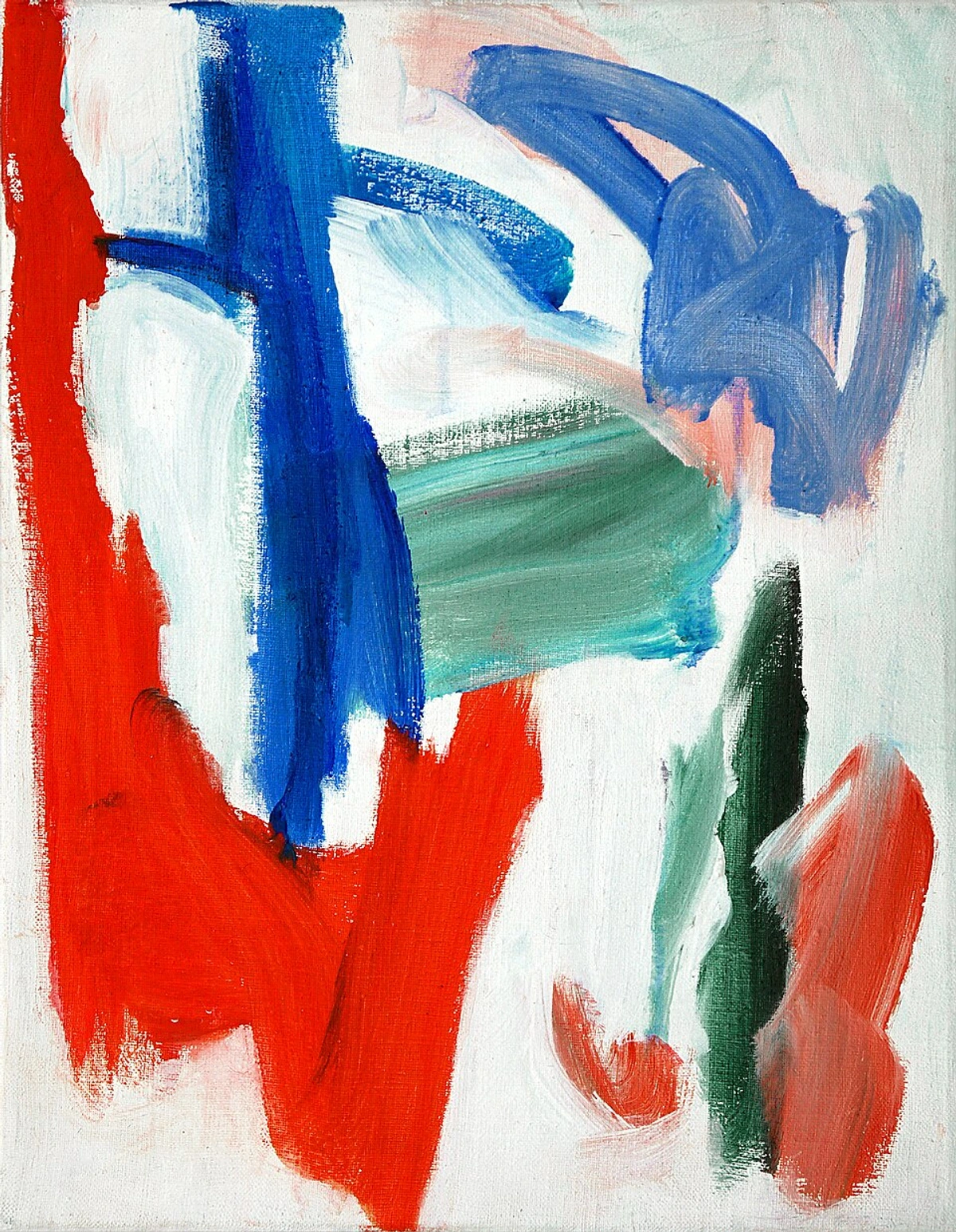
The Seeds of Abstraction: The Plot Thickens (Late 19th - Early 20th Century)
Pure abstraction didn't just appear out of nowhere, like a sudden, inexplicable urge to paint squares. No, the ground was being prepared. Several late 19th and early 20th-century art movements were already challenging the status quo, pushing against the rigid rules of traditional representation and starting to emphasize the subjective experience and the formal qualities of art itself. They were, in their own ways, planting the seeds of abstraction.
- Impressionism (1870s-1880s): These artists were rebels! They went outside! They focused on capturing fleeting moments and the effects of light, often sacrificing detail for overall impression and visible brushstrokes. Think of Monet's haystacks or water lilies – they're not photographic; they're about the experience of light and color at a specific moment. This focus on perception over precise depiction was a crucial step away from strict realism, paving the way for art that was about how you see, not just what you see.
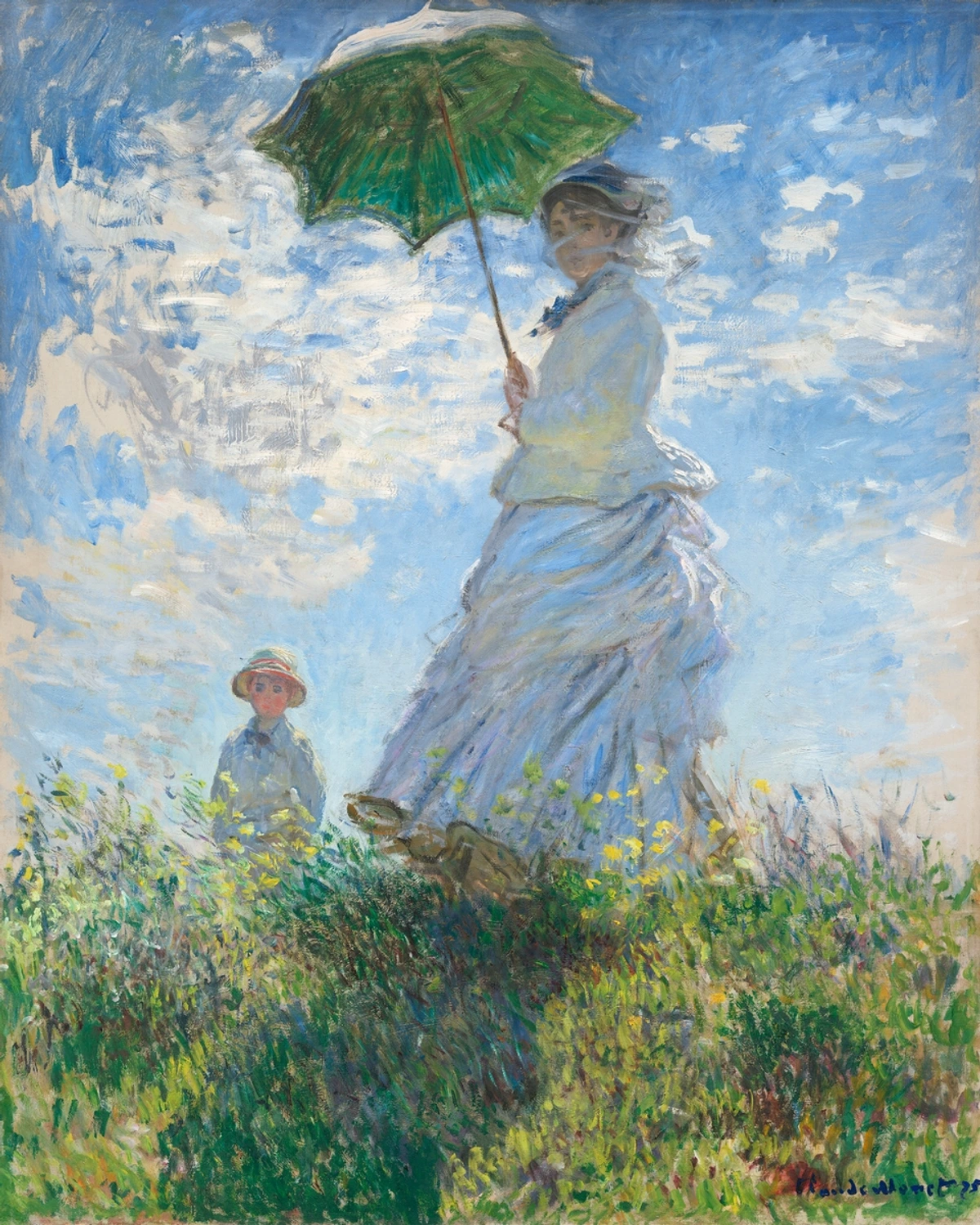
- Post-Impressionism (1880s-1900s): This is where things get even more interesting. Artists here took Impressionism's freedom and ran with it in different directions. Paul Cézanne, for instance, wasn't just painting apples; he was exploring their underlying structure and geometry, seeing the world in cylinders, spheres, and cones. This focus on analyzing and breaking down forms into basic geometric units was a crucial step towards abstraction. Then there's Vincent van Gogh, who used color and swirling brushwork not just to depict a scene, but to express intense emotion. His colors aren't always 'real'; they're how the scene felt to him. Van Gogh showed that color and line could convey inner states independently of realistic representation. And Paul Gauguin? He used symbolic color and flattened forms, caring more about the emotional or symbolic impact than realistic depiction, demonstrating that art could prioritize meaning and feeling over visual accuracy. These guys were showing that art could be about structure, emotion, and symbolism, not just likeness.
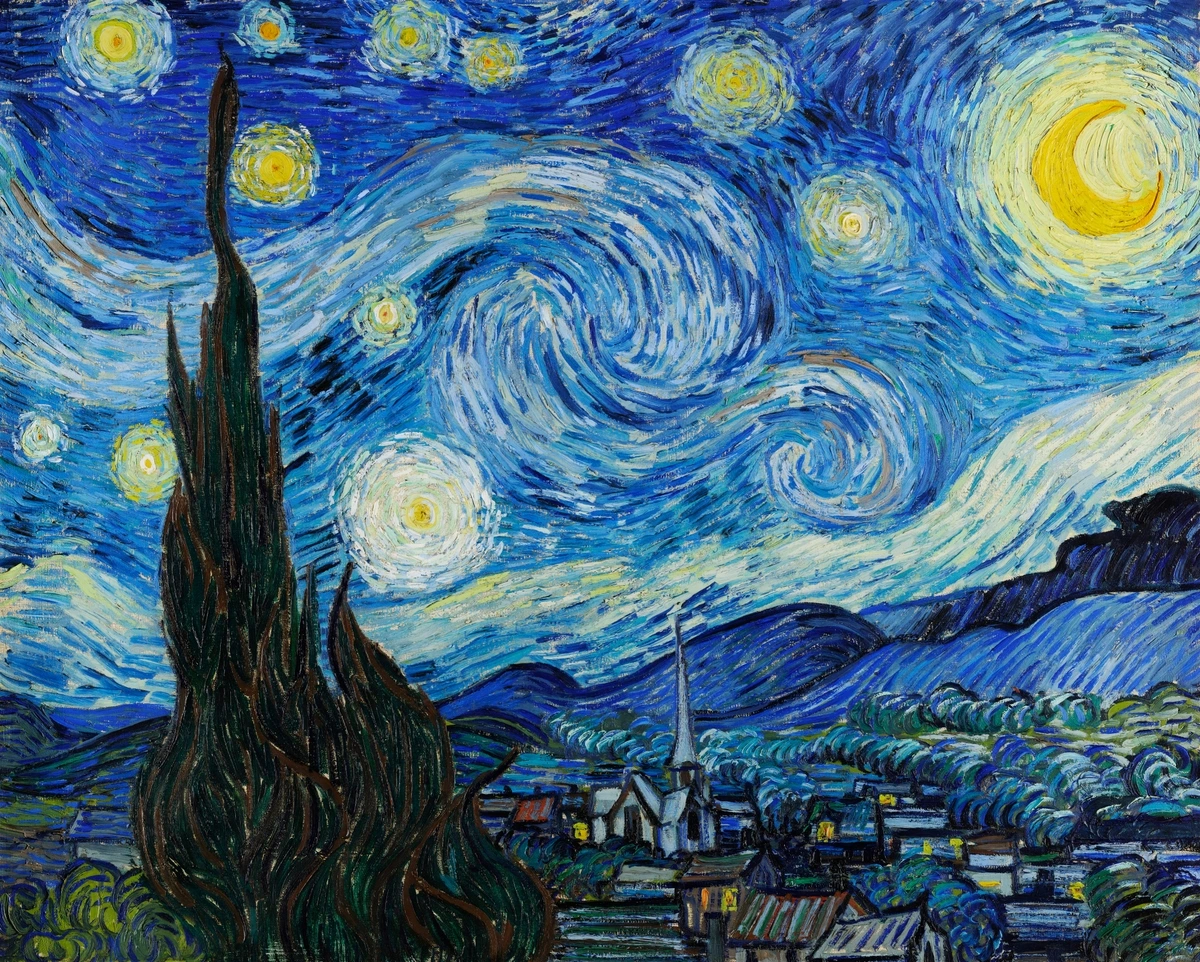
- Fauvism (Early 1900s): Led by Henri Matisse, the "wild beasts" (that's what 'Fauves' means!) used wild, non-naturalistic colors for pure expressive effect. A tree didn't have to be green; it could be red, blue, anything that conveyed the feeling or energy of the scene. Fauvism proved that color could be an independent force, detached from its descriptive function, used purely for its emotional or visual impact. You can dive deeper into this vibrant movement with our "Ultimate Guide to Fauvism".
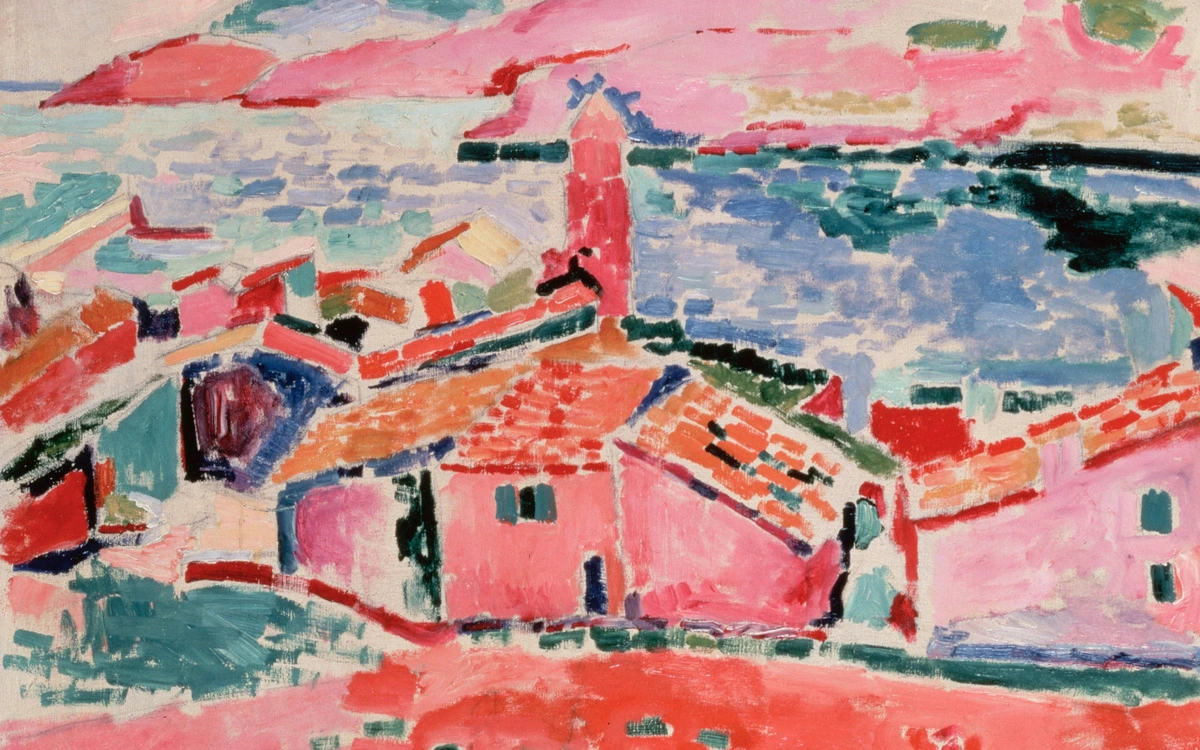
- Cubism (c. 1907 onwards): Developed by Pablo Picasso and Georges Braque, Cubism was perhaps the most direct ancestor of pure abstraction. They didn't just distort objects; they fragmented them into geometric shapes and depicted multiple viewpoints simultaneously. This wasn't how you see the world, but how you know it from different angles at once. Cubism fundamentally broke with traditional perspective and representation, showing that a painting could be an arrangement of forms and planes, paving a clear path for non-representational art. Explore this revolutionary style further in our "Cubism Art Explained".
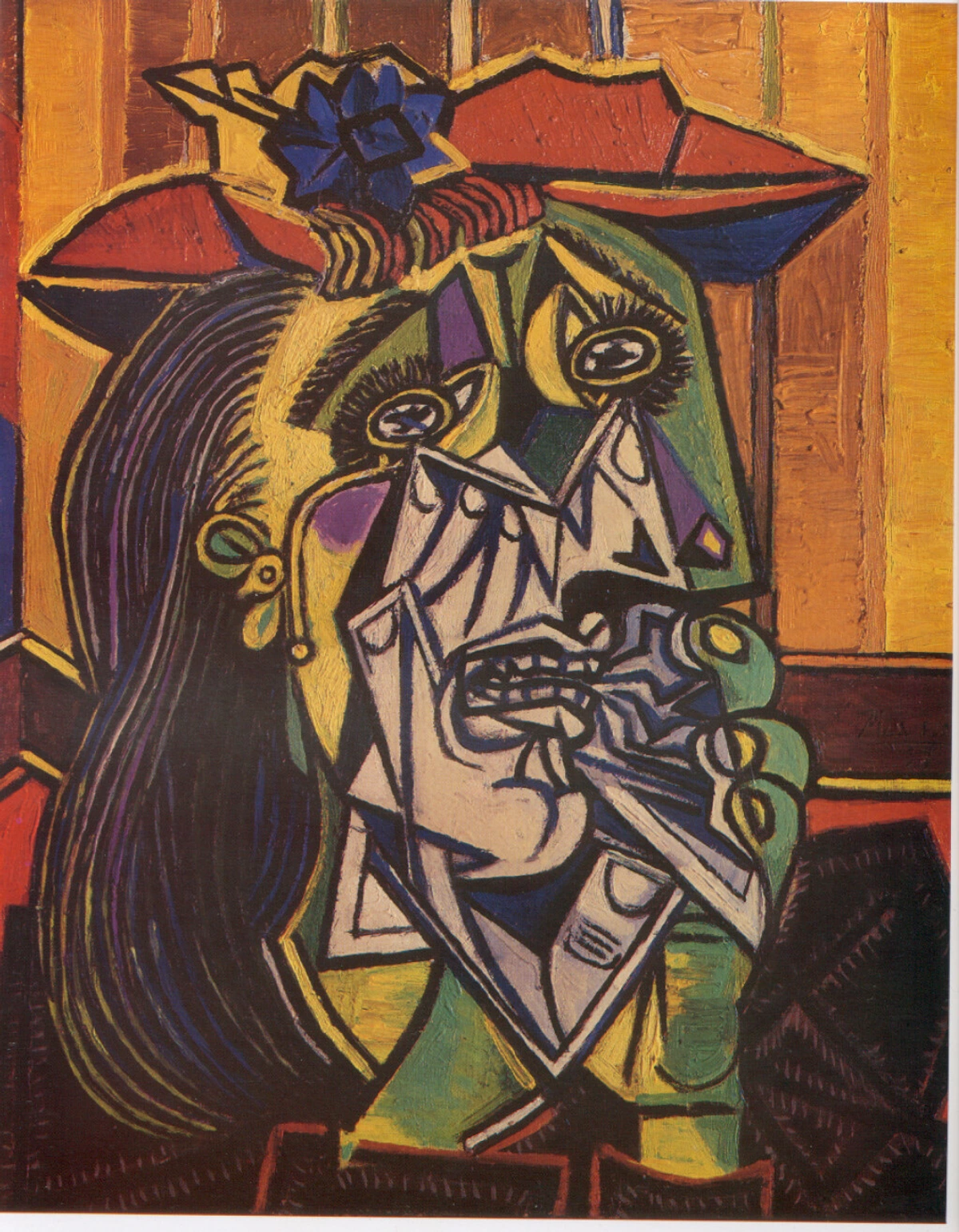
- Futurism (c. 1909 onwards): While not always purely abstract, this Italian movement, led by figures like Filippo Tommaso Marinetti, Umberto Boccioni, and Gino Severini, celebrated dynamism, speed, technology, and the energy of modern life. They sought to depict movement and change, often fragmenting forms and using vibrant colors to convey a sense of velocity and simultaneity. This focus on capturing the feeling of motion and breaking down static representation further chipped away at traditional artistic boundaries.
These movements, each in their own way, increasingly shifted the focus from what was painted to how it was painted, emphasizing artistic freedom and the expressive potential of color and form. They were dismantling the old rules, piece by piece, making the eventual leap into pure abstraction seem not just possible, but perhaps even inevitable. You can learn more about this fascinating era in our overview of "Modern Art". It's also worth noting the significant, though often uncredited at the time, influence of non-Western art forms – from Japanese prints inspiring Impressionists and Post-Impressionists to African sculpture profoundly impacting Cubism. These encounters exposed European artists to different ways of seeing, representing, and structuring visual space, further encouraging a break from their own traditions.
The Birth of Pure Abstraction: Taking the Plunge (c. 1910s)
And then, around 1910-1913, it happened. Several artists, working independently in different parts of Europe, made the definitive leap. They created works intentionally devoid of recognizable subject matter. Imagine the nerve! After centuries of art being about depicting the world, they just... stopped. I can only imagine the bewildered looks on people's faces when they first saw these paintings. "Where's the picture?" they must have asked. It was a truly revolutionary moment, a bold declaration that art could be its own reality. This period also coincided with immense socio-political upheaval, including the lead-up to World War I and rapid industrialization. Many artists sought a universal visual language or spiritual solace in response to a changing, sometimes chaotic, world, finding it in pure form and color. The fact that multiple artists made this leap independently around the same time suggests it wasn't just individual genius, but a broader cultural and intellectual current pushing towards this new visual language.
Key Pioneers: The Brave New World Builders
- Wassily Kandinsky (Russia/Germany): Often cited as a primary founder, Kandinsky was deeply spiritual and believed art should express inner spiritual necessity, like music. He even wrote a book about it, "Concerning the Spiritual in Art" (1911). Influenced by music and Theosophy, he created his first purely abstract watercolors around 1910-1913, filled with dynamic lines and vibrant colors that he felt resonated with inner sounds and emotions. He saw color and form as having their own spiritual vibrations. Looking at a Kandinsky, I often feel a sense of joyful chaos, like a visual symphony.
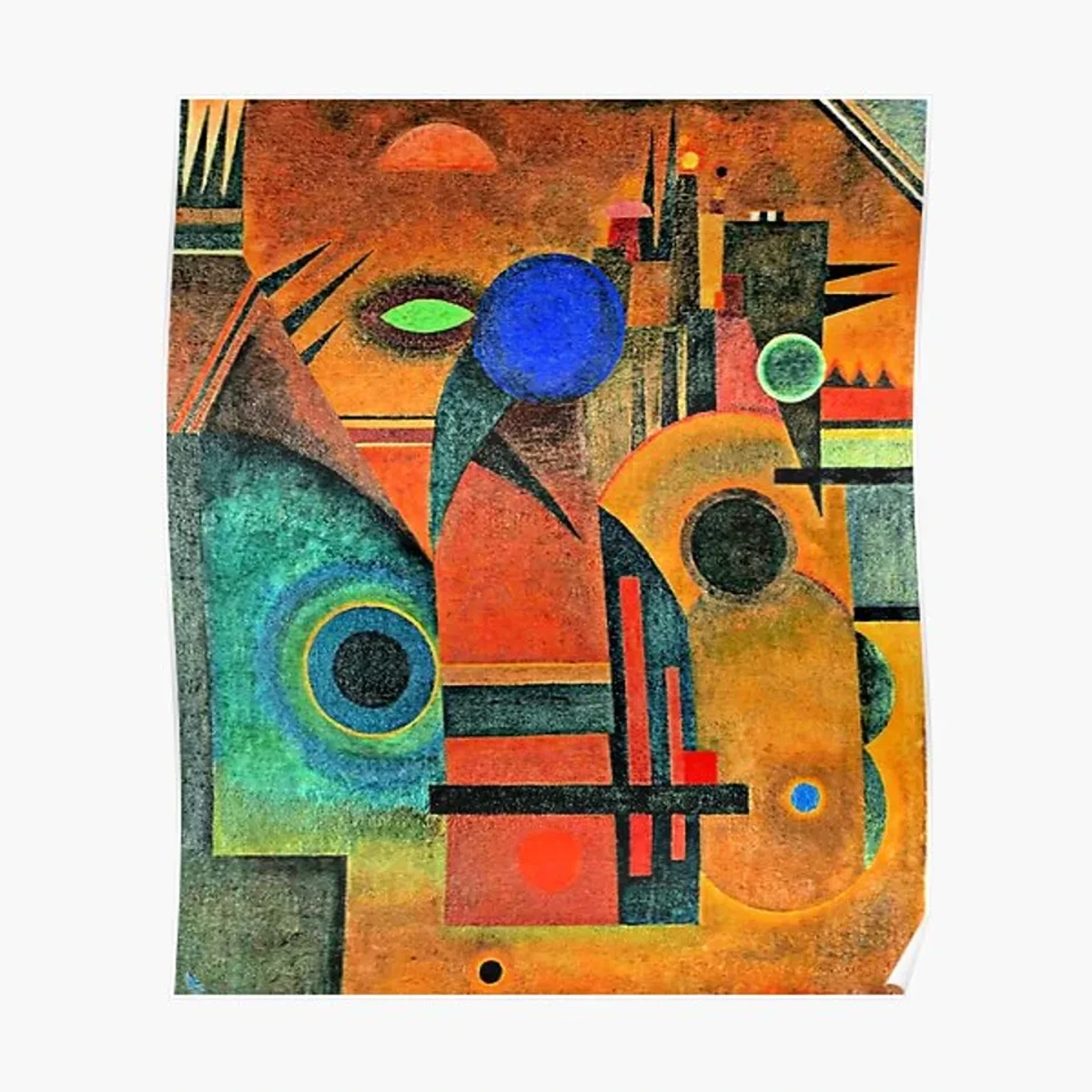
- Kazimir Malevich (Russia): The founder of Suprematism, Malevich sought the "supremacy of pure artistic feeling" over representation. His iconic Black Square (1915) is exactly what it sounds like – a black square on a white background. Radical, right? He used simple geometric shapes (circles, squares, rectangles) on plain backgrounds, aiming for a universal artistic language stripped bare of worldly reference. Works like Suprematist Composition: White on White (1918) pushed this even further, exploring the subtle nuances of form and color within an almost entirely monochromatic palette. It was about pure form and feeling, a kind of visual minimalism before Minimalism was even a thing.
- Piet Mondrian (Netherlands): A key figure in the De Stijl movement (also known as Neo-Plasticism), Mondrian took reduction to an extreme, but with a goal of expressing universal harmony and order. He limited his visual vocabulary to primary colors (red, yellow, blue), neutrals (white, black, grey), and straight horizontal and vertical lines. His compositions feel incredibly balanced and pure, aiming for a universal, almost utopian visual language. There's a quiet power in the precision and balance of a Mondrian that I find deeply satisfying.
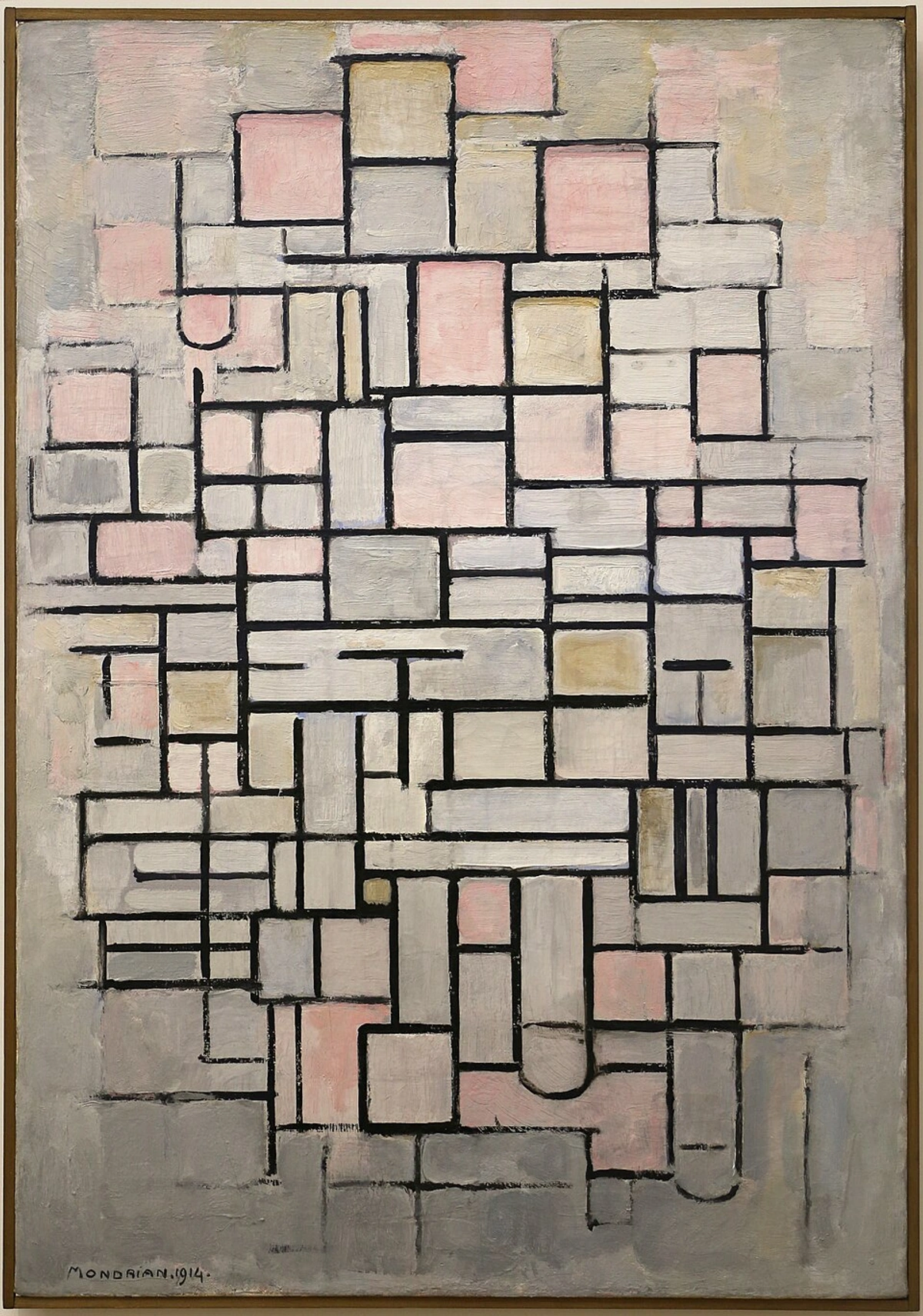
- František Kupka (Czech/France): Associated with Orphism, Kupka was fascinated by the relationship between painting, color, and music. He created dynamic, colorful abstract compositions around the same time as Kandinsky, exploring how color and form could evoke sensations similar to listening to music. His work feels like visual jazz.
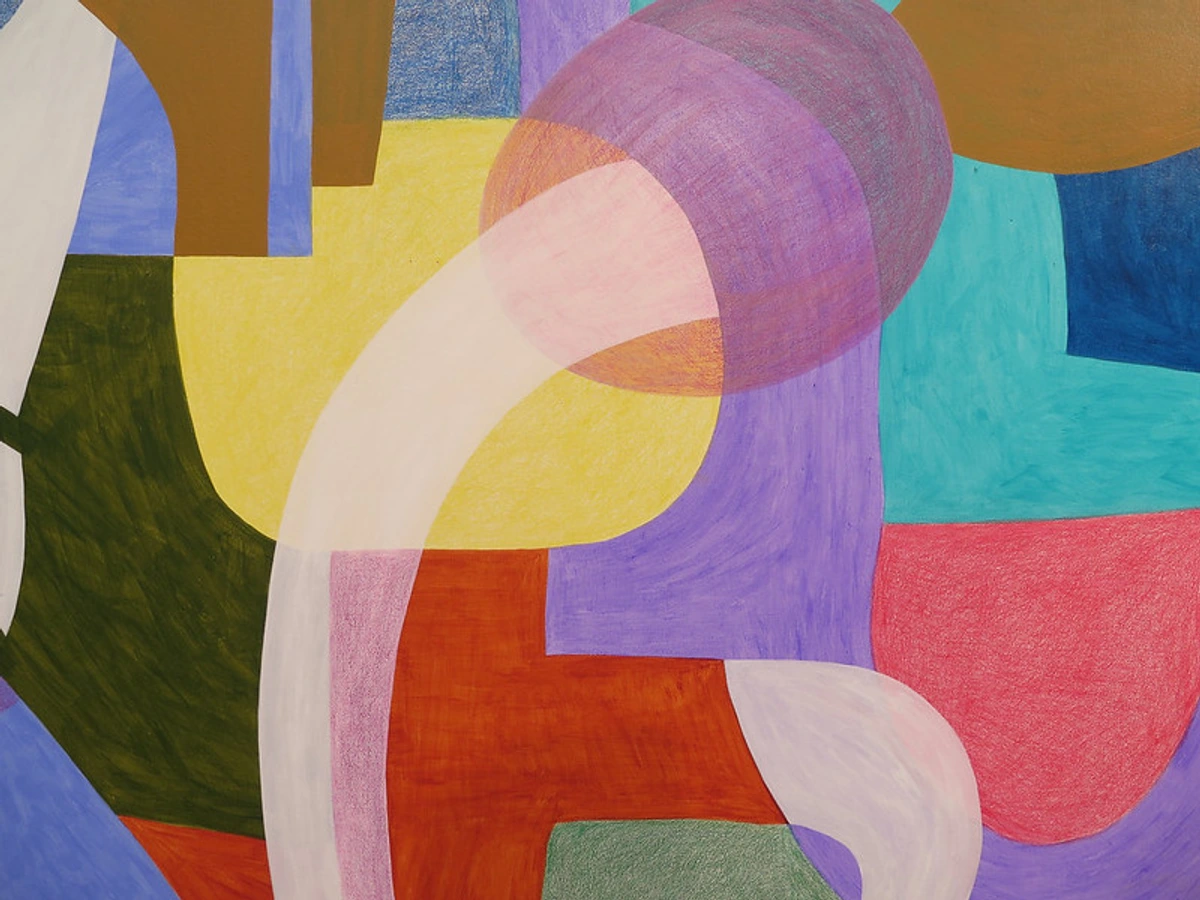
- Hilma af Klint (Sweden): Now, here's a fascinating twist in the story. While less known during her lifetime (she actually stipulated her abstract work shouldn't be shown for 20 years after her death – talk about playing the long game!), Klint was creating large-scale, vibrant abstract paintings starting as early as 1906. Yes, before Kandinsky's commonly cited date. Often inspired by spiritualism and esoteric beliefs, her rediscovery has really reshaped how we think about the very beginnings of abstract art. It's a reminder that history isn't always linear, and sometimes the most groundbreaking work is happening quietly, waiting to be found.
This period was marked by intense experimentation, fueled by spiritual quests, scientific advancements (like Einstein's theories changing perceptions of reality), and a deep desire to create a new visual language for a rapidly changing modern world. It was a time of asking, "What else can art be?"
Types of Abstract Art: A Quick Chat About Shapes and Feelings
Okay, so we've seen there are lots of flavors of abstract art. But if we had to simplify (and who doesn't love a good simplification?), we can often broadly categorize it. It's not a strict rule, mind you, just a helpful way to think about the different approaches. It's like sorting your socks – some are geometric and tidy, others are... well, more expressive. Keep in mind that many artists blend elements from both categories.
Feature | Geometric Abstraction | Lyrical/Gestural Abstraction |
|---|---|---|
| Forms | Geometric shapes (squares, circles, triangles, etc.) | Fluid, organic, irregular shapes, often undefined |
| Lines | Often precise, straight, controlled, sharp edges | Expressive, dynamic, curved, free-flowing, visible strokes |
| Composition | Structured, ordered, planned, often grid-like | Spontaneous, intuitive, dynamic, energetic |
| Emphasis | Clarity, order, universality, objectivity, structure | Emotion, energy, subjectivity, movement, feeling |
| Key Movements | Suprematism, De Stijl, Minimalism, Op Art, Hard-edge | Early Kandinsky, AbEx (Action Painting), Tachisme, CoBrA |
As I mentioned, many artists, myself included, blend elements from both categories. Sometimes a precise line feels just right, and other times you just need to let the paint flow and see what happens. That's the beauty of it – there are no strict rules, only endless possibilities. The interplay between the controlled structure of geometric forms and the free expression of gestural marks can create fascinating tension and harmony within a single piece. It's a reminder that even within abstraction, there's a vast spectrum of approaches, from the coolly intellectual to the intensely emotional. Understanding the basic "Elements of Art" and principles of "Art Composition" can help you appreciate the choices artists make, regardless of where they fall on this spectrum.
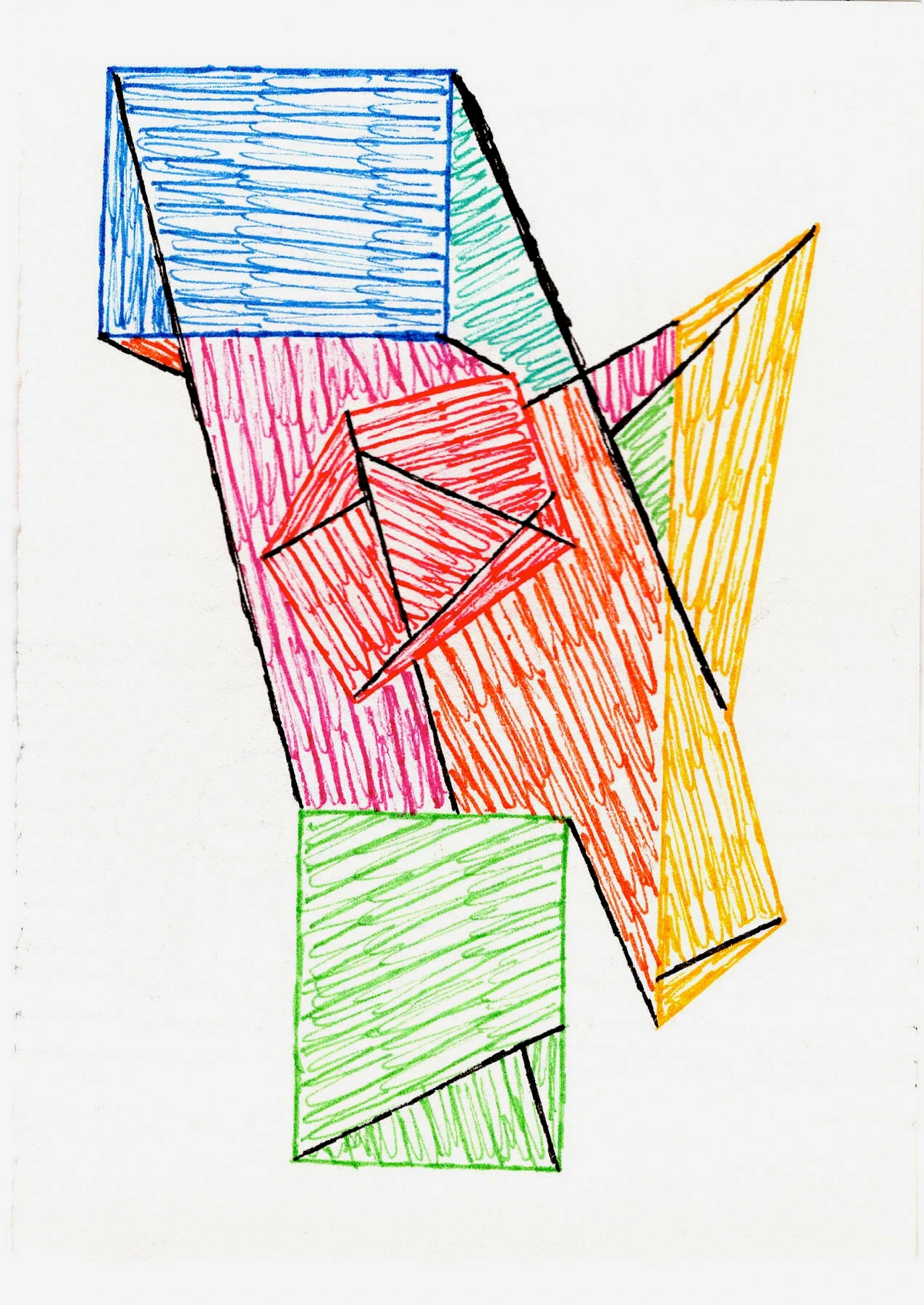
Major Abstract Art Movements & Evolution: The Family Grows
Following its revolutionary birth, abstract art didn't just sit still. Oh no. It exploded, diversified, and spread across the globe, spawning numerous distinct movements. It's like a family tree, but with more paint and fewer awkward holiday dinners. The leap had been made, and artists everywhere began exploring the vast new territory of non-representation.
Abstract Expressionism (1940s-1950s, USA)
Emerging in post-WWII New York, "Abstract Expressionism" (or AbEx, if you want to sound in the know) was characterized by its emotional intensity, large canvases (seriously, some are huge), and emphasis on spontaneous creation. It was raw, it was powerful, and it firmly established New York as the new center of the art world. When I look at a great AbEx painting, I feel the energy, the struggle, the sheer act of creation. It's worth noting that while AbEx burst onto the scene, it had American predecessors who explored abstraction earlier, like Arthur Dove, Georgia O'Keeffe (in her abstract landscapes), and Marsden Hartley, paving some of the way for this later explosion.
- Action Painting: This focused on the physical act of painting itself – the gesture, the movement, the drips, the splatters. It's less about the final image and more about the dance of making it. Key artists: Jackson Pollock (the king of the drip), Willem de Kooning, Franz Kline. You can almost feel the artist's body moving across the canvas, the energy transferring directly to the surface.
- Color Field Painting: In contrast to the gestural energy, Color Field painting was characterized by large areas of flat, solid color. These artists wanted the color itself to be the subject, intended to engulf the viewer and create a contemplative, emotional, or even spiritual response. Standing in front of a massive Rothko can be a surprisingly moving experience; the colors don't just sit there, they hum, they breathe, they wash over you, creating an immersive environment. Key artists: Mark Rothko, Barnett Newman, Clyfford Still, Helen Frankenthaler.
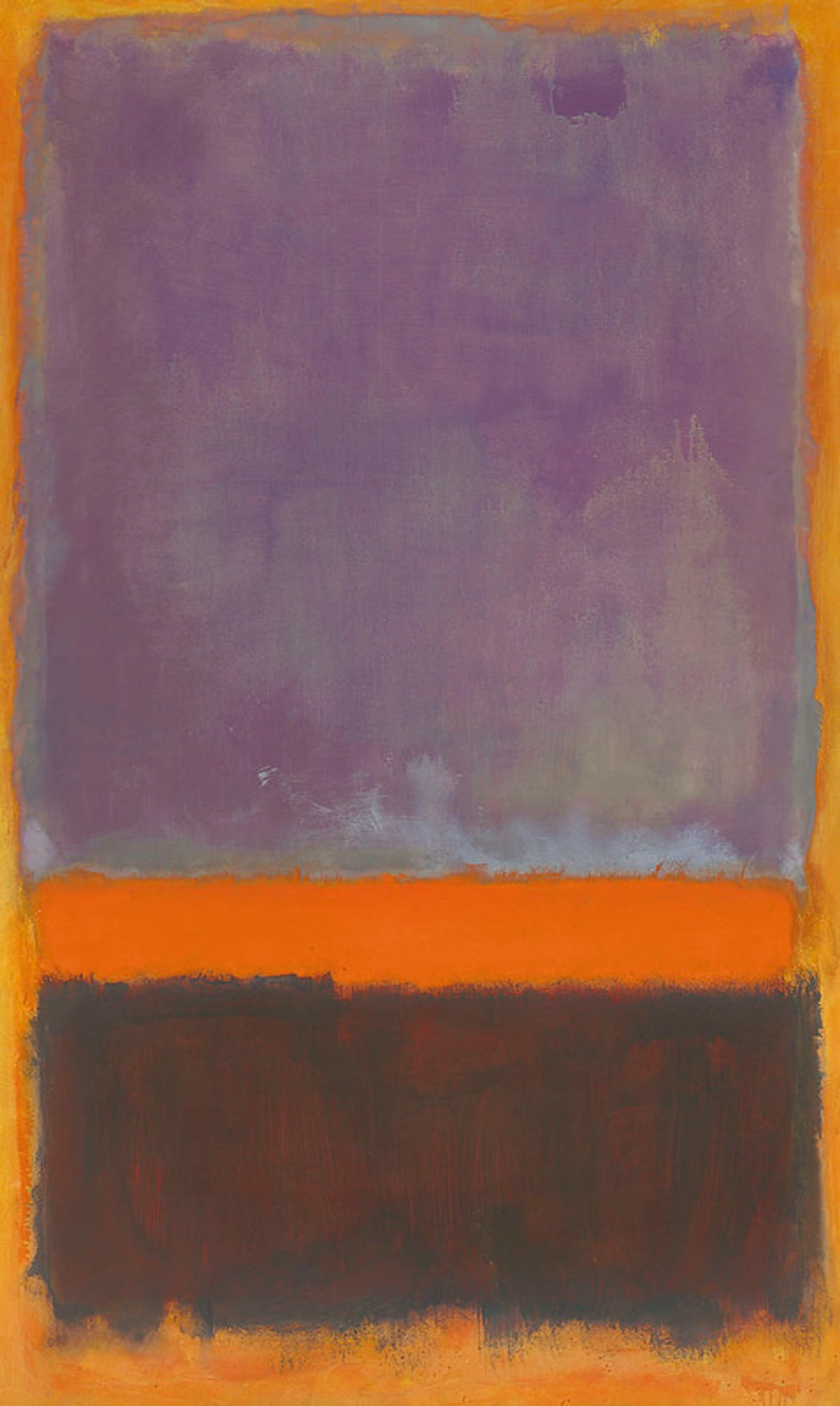
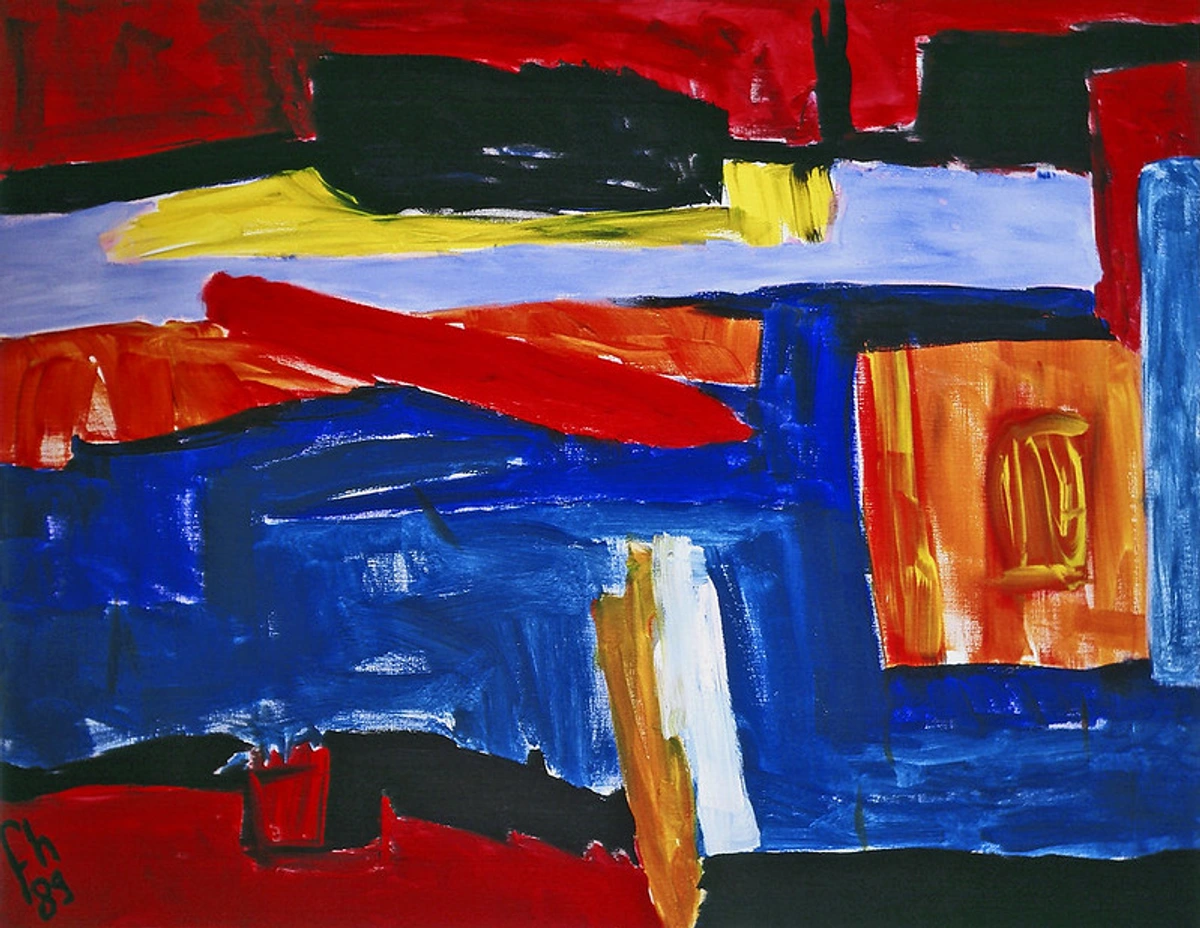
Tachisme / Art Informel (1940s-1950s, Europe)
Running parallel to AbEx in America, these European movements also emphasized intuition, spontaneity, and often heavily textured surfaces (they called it 'matière'). It was Europe's response to the post-war world, often feeling a bit more introspective or gritty than its American cousin. Key artists: Jean Fautrier, Jean Dubuffet (also associated with Art Brut), Wols, Hans Hartung.
Lyrical Abstraction (Post-WWII onwards)
Often seen as a counterpoint to the sometimes aggressive gestures of AbEx or the rigidity of geometric abstraction, Lyrical Abstraction emphasizes fluid forms, harmonious colors, and a more poetic, atmospheric quality. It feels, well, lyrical. Like a visual poem. Key artists: Sam Francis, Paul Jenkins, Joan Mitchell (who also has strong ties to AbEx).
Minimalism (1960s)
Reacting against the perceived emotionalism and subjectivity of Abstract Expressionism, Minimalism stripped art down to its essential geometric forms. It often used industrial materials and emphasized objectivity, seriality, and the relationship between the artwork and the space it occupies. It's art that makes you think about the object itself, its materials, and its presence. Key artists: Donald Judd, Frank Stella, Sol LeWitt, Agnes Martin, Dan Flavin.
Op Art (Optical Art) (1960s)
Op Art focused on creating optical illusions and perceptual effects through precise geometric patterns, lines, and color contrasts. It's art that plays tricks on your eyes, making you question what you're seeing. It's fun, it's visually stimulating, and sometimes it makes your head hurt (in a good way?). Think of Bridget Riley's Movement in Squares (1961), where simple black and white lines create a dizzying sense of undulation. Key artists: Victor Vasarely, Bridget Riley.
Post-Painterly Abstraction (1960s)
Coined by critic Clement Greenberg, this term encompassed styles like later Color Field painting and Hard-edge painting, characterized by openness, clarity, and often anonymous execution, moving away from the dense, visible brushwork of Abstract Expressionism. Hard-edge painting, with its sharp, defined boundaries between color areas (think Ellsworth Kelly or Frank Stella's early work), is a prime example of this shift towards clean lines and pure color areas.
Abstraction Goes Global
It's important to remember that abstraction wasn't just a European or American thing. It was a global phenomenon, with artists in different parts of the world developing their own unique approaches. Think of the Gutai group in Japan, who explored the relationship between the human body, material, and the artistic process in incredibly dynamic and often performative ways, pushing the boundaries of what abstract art could be. Or the CoBrA group in Europe, who embraced spontaneity, bright colors, and forms inspired by folk art and children's drawings. In Latin America, movements like Constructivism in countries like Argentina and Uruguay developed unique geometric abstract languages. These movements, and many others across Asia, Africa, and beyond, showcase abstraction's incredible adaptability and global reach, proving that this visual language speaks across cultures.
![]()
Addressing the Skeptics: "My Kid Could Do That!"
Ah, the classic line. I've heard it, you've heard it, we've all heard it. And honestly, it's a valid reaction if you're only looking for realistic depiction. But it misses the point entirely. Abstract art isn't trying to replicate reality; it's trying to create a new reality or express something internal. When someone says "My kid could do that," they're usually focusing only on the apparent lack of traditional rendering skill. But that's like saying a composer isn't skilled because they're not writing a pop song with a catchy chorus. Different goals, different skills.
Abstract art requires a deep understanding of color theory, composition, texture, and form. It requires intention, vision, and the ability to evoke emotion or ideas through purely visual means. It's about making deliberate choices about how elements interact on the canvas to create a specific effect. It's not random. It's a complex visual language that takes time and effort to master. And sometimes, yes, a child's uninhibited use of color and form can remind us of the raw energy found in some abstract art, which is perhaps a testament to the power of those fundamental elements, not a dismissal of the art form itself.
The Impact and Legacy of Abstract Art: It's Everywhere!
Abstract art wasn't just a fleeting trend; it fundamentally changed the course of art history. Its impact extends far beyond the canvas, seeping into so many aspects of our visual world. Honestly, once you start looking, you see its influence everywhere.
- Influenced Later Art: It paved the way for movements like Conceptual Art, Land Art, Performance Art, and continues to influence contemporary practices. Without abstraction breaking the mold, who knows what art would look like today? It opened the door for artists to explore ideas, materials, and processes in entirely new ways. You can trace its lineage through the entire history of "Modern Art" and into "Contemporary Art".
- Design & Architecture: This is where I really see it in my daily life. Its principles of form, color, and composition heavily influenced modern graphic design, interior design, fashion, and architecture. Look at the clean lines of modern furniture, the bold graphics on posters, the way color is used in interiors – that's abstraction at work! Think of how the geometric principles of De Stijl influenced the functional design of the Bauhaus movement, which in turn shaped so much of 20th-century design. Or how the expressive use of color in Fauvism and AbEx finds echoes in bold contemporary interiors. It's pretty cool to think that those early pioneers are still shaping the world around us.
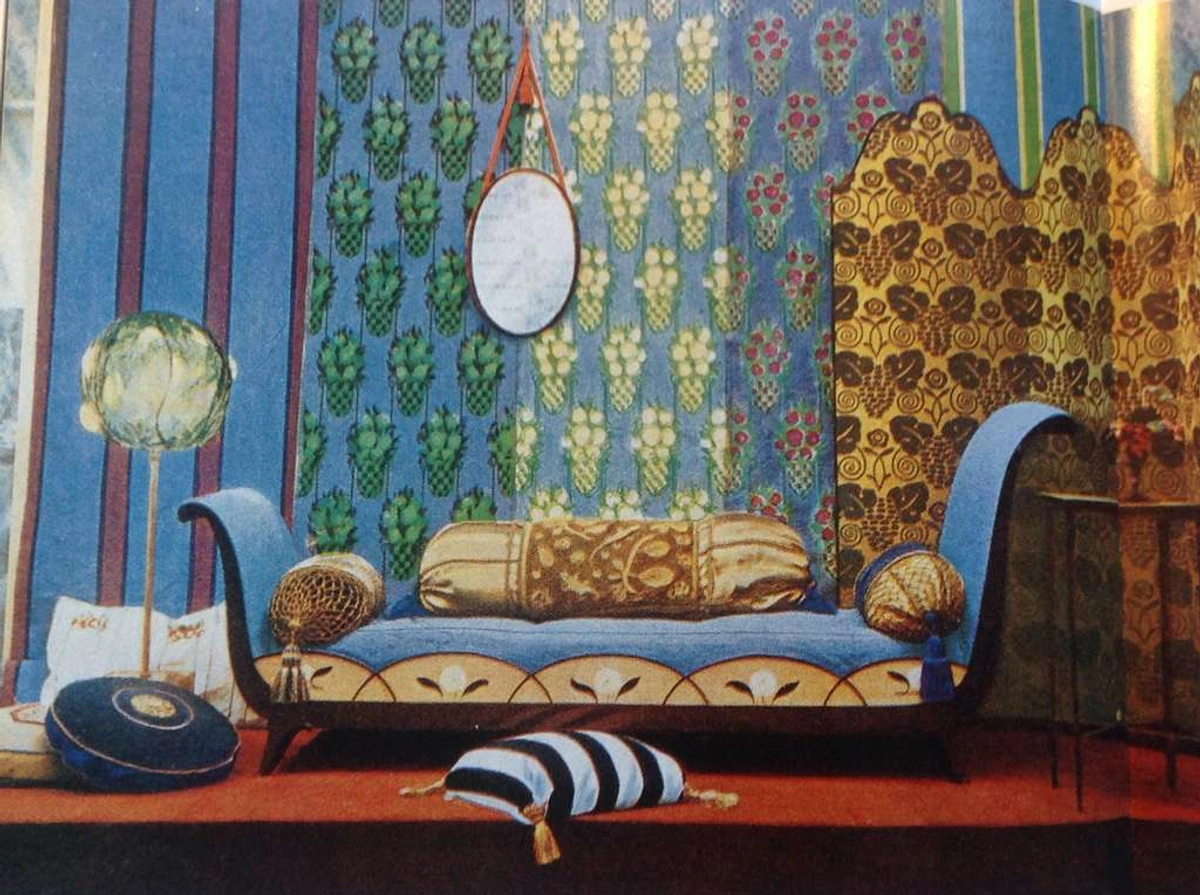
- Global Phenomenon: As we touched on, abstract movements emerged worldwide, adapted and reinterpreted in different cultural contexts. It's a truly international language.
- Freedom of Expression: Perhaps most importantly, it championed artistic freedom, emphasizing the power of art to communicate beyond literal representation. It showed that art could be about the artist's inner world, about pure visual experience, about anything they wanted it to be. Its enduring appeal is something I often ponder, and our article "Why People Like Modern Art" explores this further.
Contemporary Abstract Art: Still Kicking!
Abstraction isn't some dusty historical relic; it remains a vital and evolving field today. Contemporary artists, myself included, continue to explore its endless possibilities. We're using diverse materials (from traditional paint to digital media) and drawing inspiration from personal experiences, global issues, and, of course, the rich history we've just walked through. Artists like Frank Stella or Mark Rothko, though historical figures now, continue to influence contemporary abstract painters. But there are countless living artists pushing the boundaries today, working in styles ranging from minimalist geometric explorations to vibrant, expressive gestural works. Discovering today's key figures is also valuable; check out our list of "Top Living Artists You Should Know" and explore the work of "Best Contemporary Artists".
- Diversity: Styles range from minimalist explorations to vibrant, expressive works. There's truly something for everyone. You can find artists working in pure geometric abstraction, others in gestural abstraction, and many who blend approaches.
- New Media: Digital tools offer exciting new ways to create and experience abstract forms, pushing the boundaries even further.
- Global Voices: Artists worldwide contribute unique perspectives to abstraction, reflecting their own cultures and experiences.
Artists like me create colorful, dynamic pieces that carry forward the spirit of abstraction, offering unique works perfect for modern spaces. It's a way to connect with this history while creating something entirely new. You can explore some such pieces in the art for sale section. And if you're curious about my own journey within this broad tradition, the artist's timeline shows a personal path through the world of art.
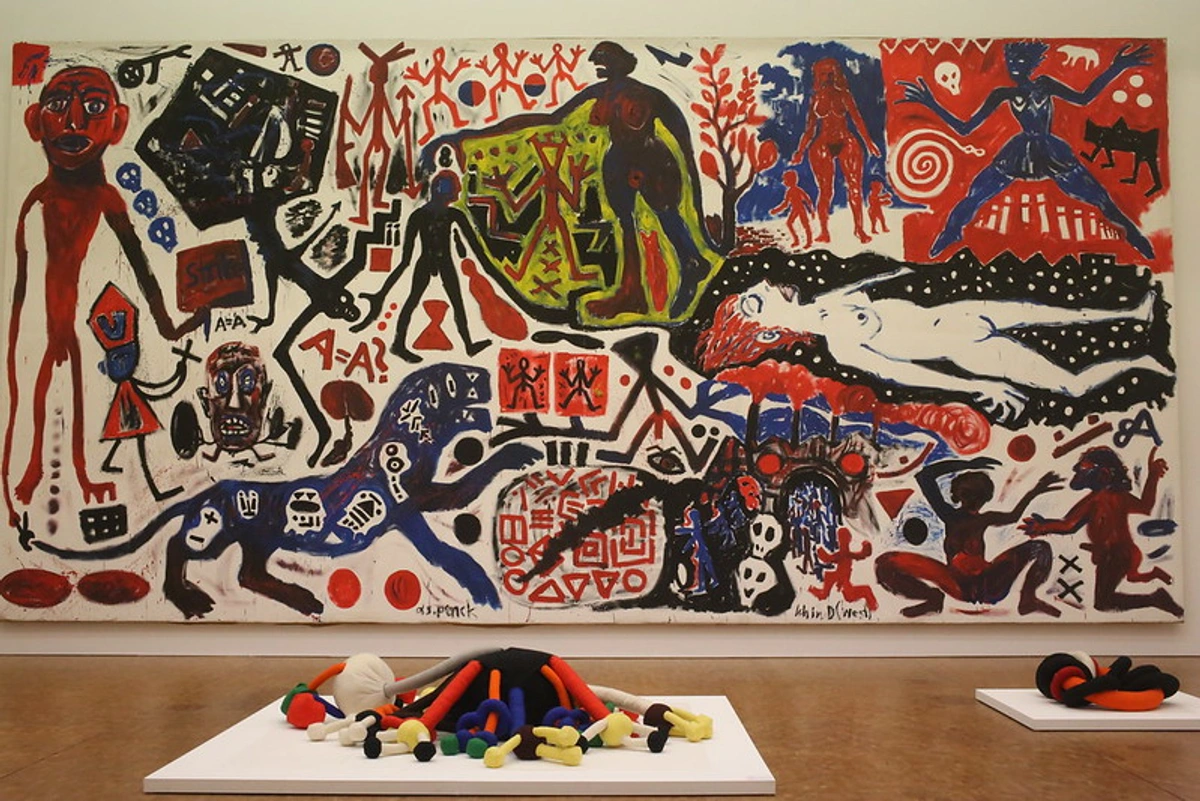
Finding Your Way In: How to Connect with Abstract Art
Okay, let's be honest. Approaching abstract art can sometimes feel a bit... intimidating. Like you're supposed to 'get' something you're not getting. But trust me, it doesn't have to be. It offers a wonderfully rewarding viewing experience if you just relax and let it happen. Here's what I find helps, based on my own experience both making and looking at abstract work:
- Look Beyond Likeness: This is the big one. Don't stand there trying to figure out what it's supposed to be a picture of. It's probably not a picture of anything in the traditional sense. Accept the work on its own terms. It is what it is.
- Engage Your Senses: Forget your brain for a second and just look. Focus on the color combinations – how do they make you feel? Look at the quality of the lines – are they sharp and fast, or soft and slow? What about the shapes used – are they hard-edged or organic? Feel the texture (in your mind, don't touch!) – is it smooth, rough, layered? How do these elements interact? It's like listening to music without lyrics; you focus on the melody, the rhythm, the harmony. Understanding the "Elements of Art" can really enhance this sensory engagement.
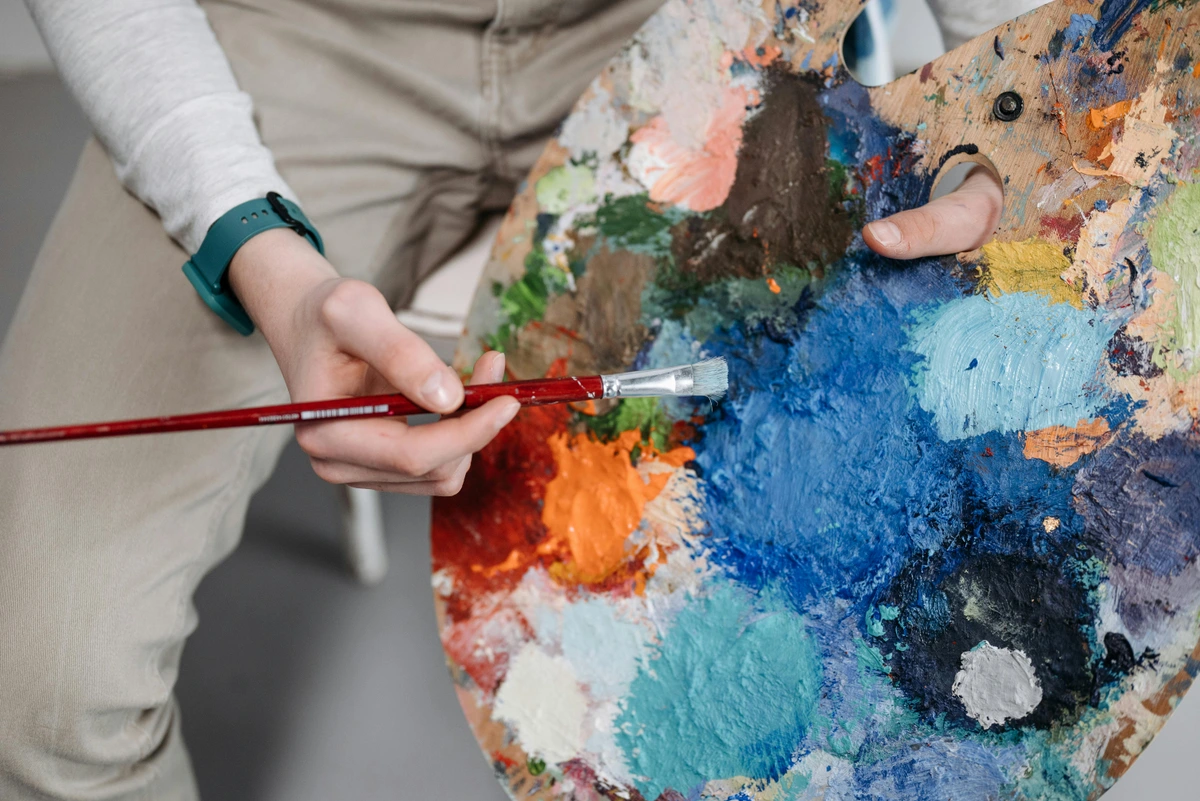
- Consider Context (But Don't Stress): Knowing the title, the artist's background, or the historical period can offer clues, like a little hint, but it's absolutely not essential for having a personal connection with the work. Don't feel like you need a degree in art history to appreciate it. Our guide on "How to Read a Painting" offers useful techniques, even for abstract works, that go beyond just identifying objects.
- Trust Your Feelings: This is perhaps the most important tip. How does the artwork make you feel? Energetic, calm, curious, uneasy, confused (that's okay too!)? There is no single "correct" interpretation. Your emotional response is valid and personal. It's your conversation with the art. Explore how artists use elements symbolically in our article "How to Understand Symbolism".
- Take Your Time: Don't rush it. Allow the artwork to unfold. Sometimes the impact isn't immediate. Just stand (or sit!) with it for a few minutes. Let your eyes wander. See what you notice.
- Visit Studios and Talk to Artists: If you have the chance, visit an artist's studio (like mine in 's-Hertogenbosch if you're ever in the Netherlands!) or attend artist talks. Hearing an artist discuss their process, intentions, and relationship with abstraction can offer invaluable insights and make the work feel much more accessible and human.
Visiting museums and galleries provides invaluable opportunities to experience abstract art firsthand. Seeing the scale, the texture, the true colors – it's a different experience than seeing it on a screen. Explore collections at renowned institutions listed in "Best Museums for Modern Art" or find leading galleries in "Best Galleries for Modern Art". Even focused venues, like my own museum in 's-Hertogenbosch, can offer deep dives into specific visions rooted in abstract principles. Go, look, feel!
Collecting Abstract Art: Bringing the Magic Home
Bringing abstract art into your own space can be incredibly rewarding. It can transform a room, spark conversation, and bring a unique energy. Whether you're drawn to bold statements or subtle compositions, starting a collection, or just finding that one perfect piece, here's how I think about it: Living with abstract art is a constant dialogue; it changes with the light, with your mood, always offering something new.
- Discover Your Taste: Explore different styles! Look online, visit galleries, flip through art books. What colors, forms, or feelings resonate with you? Don't worry about trends; find what you love. Our guide "How to Define Your Personal Art Style and Taste" can help you figure this out.
- Do Your Research: Once you find artists whose work you admire, learn a little about them. What's their story? What inspires them? "Researching Artists: What to Look for Before You Buy" provides key pointers. Understanding the role of galleries and dealers, especially in the history of movements like Abstract Expressionism, can also provide context for the market today.
- Prints vs. Originals: Understand the difference and decide what fits your goals and budget. Both can be wonderful ways to own art. See "Prints vs. Paintings: Which Art Should You Buy?". (As an artist who sells both, I can tell you there's a special connection with an original, but a print can bring just as much joy and beauty to a space!)
- Budget Wisely: Abstract art is available at various price points. Don't feel like you need to spend a fortune to start. Quality prints or works by emerging artists can be great starting points. Check out "Starting an Art Collection on a Budget" and "Understanding Art Prices" for more realistic expectations. Find tips in "Where to Find Affordable Original Art Online".
- Where to Look: Explore online galleries (like the art for sale page right here!), artist websites, art fairs, and local galleries. "Where to Buy Art Online" offers more resources. For general buying tips, see "How to Buy Art".
- Emerging Talent: Consider supporting up-and-coming artists creating exciting abstract work. It's a fantastic way to find unique pieces and connect with an artist's journey. Learn how with "How to Spot and Buy Art from Emerging Artists".
- Decorating: Abstract art can truly transform a room, adding a focal point, color, and personality. Find ideas in "How to Decorate a Wall" and "How to Decorate Your Home". It's amazing how a piece of abstract art can pull a space together or add that missing spark.
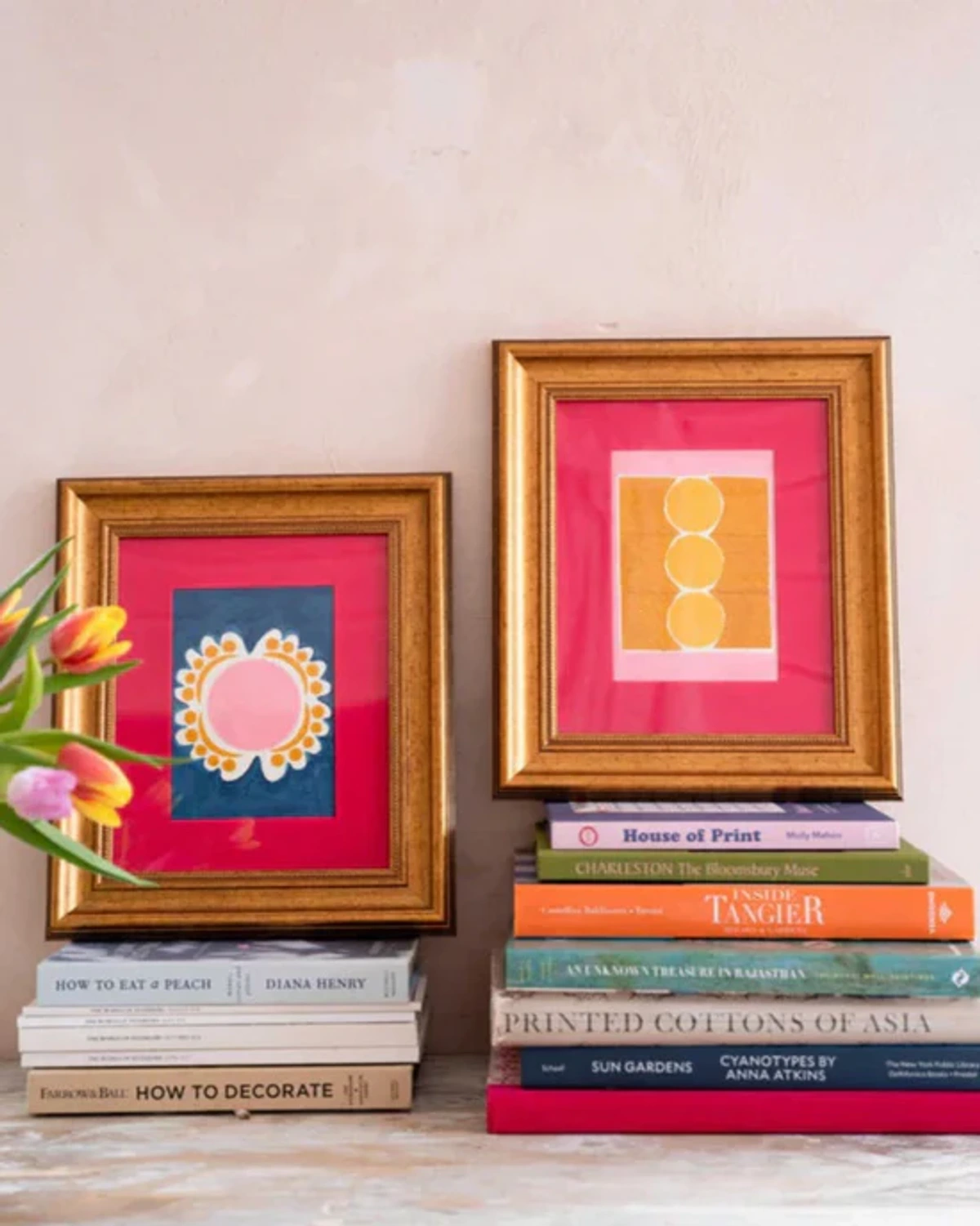
Frequently Asked Questions (FAQ): Let's Address the Elephant in the Room (Even if it's an Abstract Elephant)
People often have questions about abstract art, and that's perfectly normal! It's a different way of seeing. Here are a few I hear or think about:
Q: What is the main point of abstract art? A: The main point is often to evoke emotion, explore formal qualities (color, line, shape), express inner states, or experiment with the medium itself, rather than depicting the external world realistically. It's about a different kind of communication.
Q: Who is considered the "father" of abstract art? A: Wassily Kandinsky is frequently cited as one of the primary pioneers or "fathers" of pure abstract painting, creating his first non-representational works around 1910-1913. However, artists like Malevich, Mondrian, Kupka, and the earlier (though then unknown) Hilma af Klint were also crucial figures in its independent emergence. It's probably more accurate to say it had several parents!
Q: Is abstract art "real" art if it doesn't look like anything? A: Absolutely, unequivocally YES. "Real art" isn't defined solely by realistic representation. Abstract art uses fundamental artistic elements (color, form, composition) to communicate ideas and emotions, requiring skill, intention, and creativity. Its value lies in its expressive power and visual impact. It's just speaking a different language.
Q: What's the difference between abstract art and decoration? A: This is a tricky one, and often subjective! All art can be decorative, and some decoration can be artful. However, abstract art typically stems from a deeper conceptual or emotional intention, engaging with art history, theory, or personal expression in a way that purely decorative items might not. It aims to provoke thought or feeling beyond just looking pleasant. But ultimately, if a piece of abstract art brings you joy and enhances your space, does the label really matter?
Q: What's the difference between abstract and non-representational art? A: These terms are often used interchangeably, even by art folks! Technically, "abstract" can refer to art derived from a real object but simplified or distorted (semi-abstract), while "non-representational" refers to art with no direct reference to the natural world (pure abstraction). In common usage, "abstract art" covers both. So, don't get too hung up on it.
Q: How did abstract art start? A: It emerged gradually from late 19th/early 20th-century movements like Post-Impressionism, Fauvism, and Cubism, which increasingly prioritized color, form, and subjective experience over realism. The final leap to pure abstraction occurred around 1910-1913 with pioneers like Kandinsky, Malevich, and Mondrian, who decided to cut the cord entirely from representation, influenced by philosophical shifts and the changing world.
Q: Why is some abstract art so popular/expensive? A: Popularity stems from its visual appeal, emotional resonance, and decorative potential – it just looks good in a modern space! High prices for certain works reflect factors like the artist's historical importance, rarity, provenance (ownership history), critical acclaim, and market demand, similar to other art genres. It's a complex mix of history, taste, and economics. You can learn more in "Understanding Art Prices".
Q: Why do I create abstract art? A: For me, creating abstract art is about exploring the pure language of painting. It's a direct conversation between me, the materials, and the canvas. I'm fascinated by how colors interact, how lines create movement, and how shapes can evoke feelings without depicting anything specific. It feels like building something from the ground up, using the fundamental elements of visual communication. It's challenging, intuitive, and deeply personal. It allows me to express things that can't be put into words or represented visually in a literal way. Plus, it's just incredibly fun to play with paint!
Conclusion: The Ongoing Conversation
The history of abstract art is, as you can see, a fascinating journey of innovation, rebellion, and a profound exploration of the visual language itself. From its revolutionary beginnings with pioneers seeking spiritual expression and universal harmony, through dynamic mid-century movements that captured the energy and emotion of a changing world, to its diverse contemporary forms that continue to push boundaries, abstraction has proven to be incredibly resilient and adaptable.
It invites us, perhaps more than any other art form, to see the world—and art—differently. It asks us to focus on the power of color, the energy of a line, the harmony (or tension!) of form. It's a reminder that art doesn't have to show us reality; it can be a reality of its own, one that speaks directly to our senses and emotions. I truly encourage you to explore abstract art further, whether through visiting museums, learning about artists (maybe even checking out my own work!), or perhaps even finding a piece that speaks to you personally. It's a conversation that's been going on for over a century, and there's always room for one more voice – yours. So go on, look at the world, look at art, and see what you feel.
